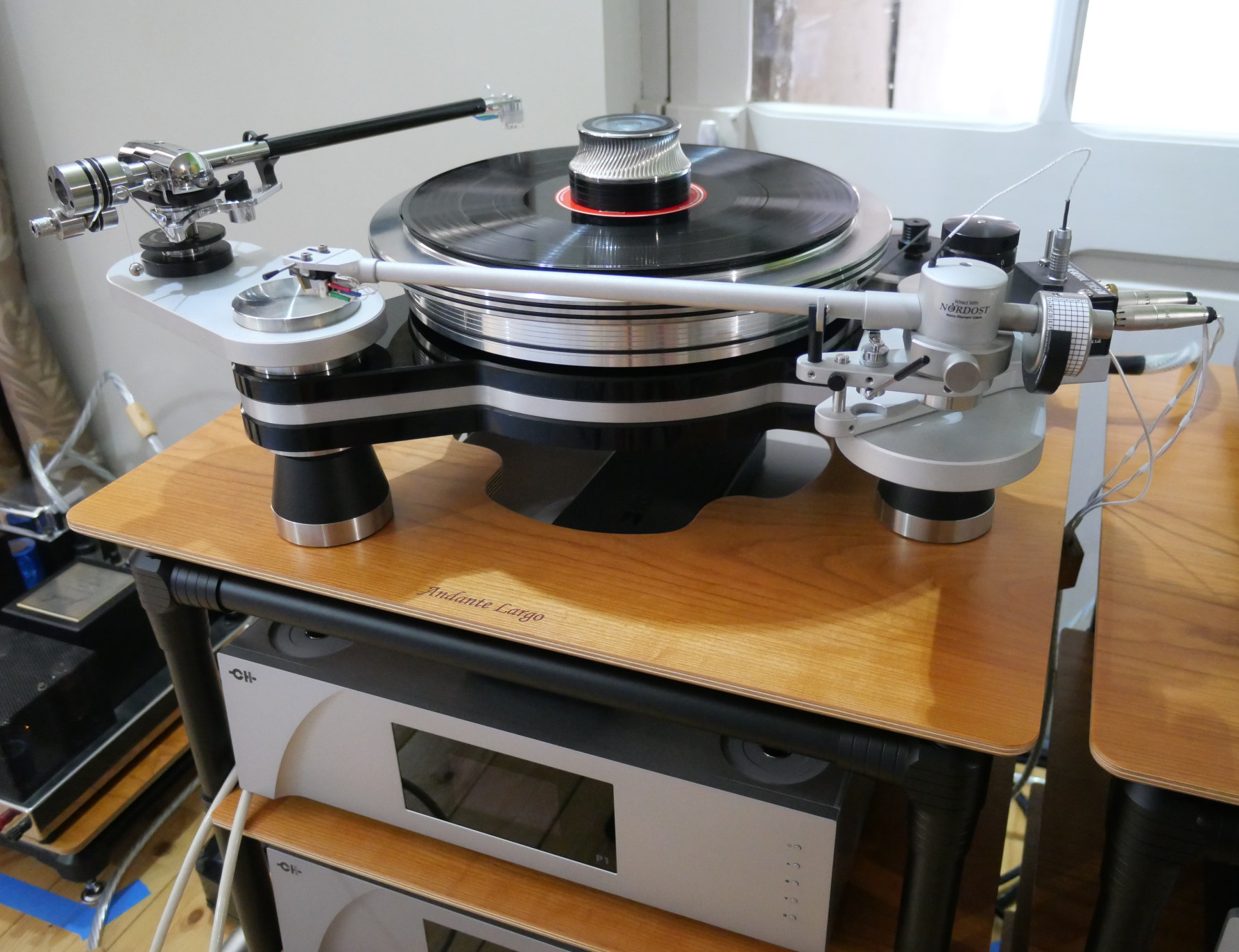Given the light and heavy options available on the Orbius, along with the Stillpoints and Kuzma alternatives, that made four different options to assess. Obviously, I’m familiar with both the Kuzma Ebony weight and the Stillpoints, but it still made for a potentially convoluted process, especially with the need to change the insert in the Orbius. With that in mind, I thought I’d start by comparing the two inserts for the Arya Audio weight, to establish both differences and if I had a clear preference – only, as it turned out, it’s not quite that simple.
Running the record directly on the Avenger’s aluminium platter (as preferred by VPI, remember) with the JMW/Etna combination, the differences between the light and heavy Orbius were far from subtle. The lighter, Mpingo insert sounded hurried and flustered in comparison with the calm stability of the heavier, Tungsten loaded weight. The heavy option brought greater space to the soundstage and a focussed quality to the instruments, setting them against a blacker background, extracting more harmonic and textural definition, wider dynamic range and more defined space between notes. This solid, rich, unhurried presentation was full of poise and purpose, dynamic and tonal/textural contrasts.
Swapping to the Kuzma and Stillpoints weights clearly demonstrated the superior performance of the Orbius and its greater musical insight. The Kuzma came close to matching the Arya’s tonal range, but without the inky black background or the harmonic and micro-dynamic resolution that goes with it. Musical fluidity and shape were both excellent, with a nice sense of pace and phrasing – the qualities that attracted me to the Kuzma in the first place – but it couldn’t match the note-to-note definition, presence and immediacy of the Orbius, creating a more muted performance with reduced detail and transparency, without the same ability to see into the playing or appreciate the relationship between the different parts and performers.
Playing the Iona Brown/Josef Suk’s recording of Mozart’s Sinfonia Concertante K.364 (with the ASMF on Argo 411-613) is the perfect example of the difference between these two weights. This isn’t a fabulous recording – but it is a fabulous performance, the two soloists at the top of their game, ably supported by the Academy, under Brown’s familiar direction. The Kuzma leaves you in no doubt as to the excellence of the playing and the performance as a whole. But the Orbius delivers greater space and separation, both between the instruments and between the parts, making the complex structure of Mozart’s music easier to understand and appreciate. There’s a much greater sense of presence to the orchestra and soloists, more insight into their bowing and technique, wider dynamic contrasts and a more dramatic overall effect.

While the Orbius and Kuzma weights might be considered as distinct points on the same musical and presentational continuum, switching to the Stillpoints was a major shift in perspective. Crisp, dynamic and solid sounding, with a significant lift in presence and immediacy, certainly compared to the Kuzma, the Stillpoints weight came close to matching those qualities in the heavy version of the Orbius. But those impressive dynamics and the impact that goes with them come at the expense of a muted, slightly metallic tonal palette and a mechanistic quality that robs the sound of rhythmic flexibility and subtlety. This is a driven sound, full of musical purpose and momentum, but losing expressive range and intimacy. In one sense, the upbeat tempo of a song like ‘Listen To the Radio’ (Nanci Griffith – Storms – Alto AA 004) should suit the Stillpoints down to the ground, with its pace and pushy rhythm. But although it delivers a toe-tappingly infectious performance, it loses the subtle nuance and intimacy in the vocals and rather steam rollers through the hitch-kicks and variations in dynamic density and pace that keep the song moving forward, instead simply propelling it pell-mell from start to finish. The calm, relaxed presentation of the Orbius robs the song of none of its catchy quality, but the instruments and voice are far more natural, the dynamic contrasts more telling, the overall sense of the song more obvious, partly because the lyrics are clearer and more intelligible.

